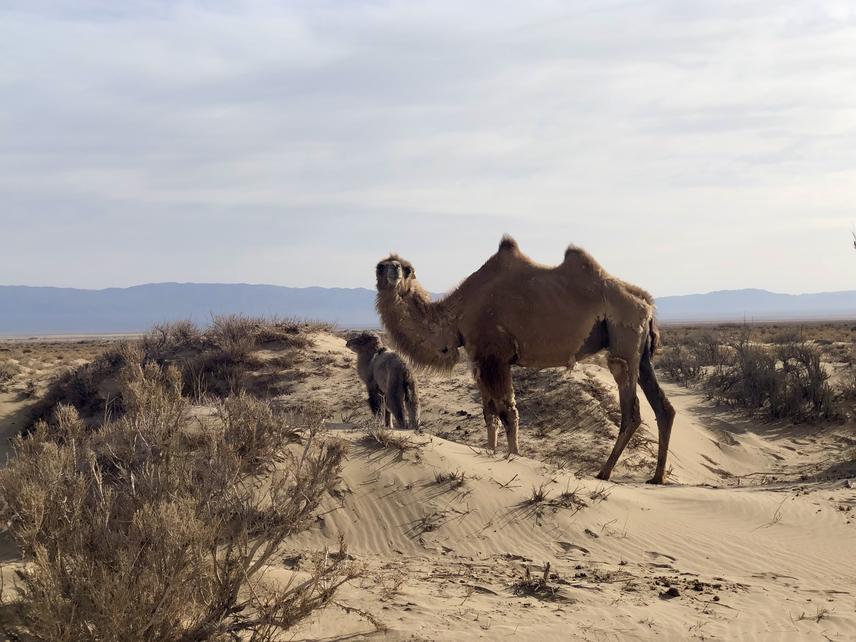Martina Sihelská
The wild camel (Camelus ferus) is one of the rarest large mammals on Earth, with fewer than 1,000 individuals remaining in the wild across Mongolia and China. Despite its remarkable resilience and ability to survive in some of the harshest desert environments, it is listed as Critically Endangered – and remains largely unknown to the public.

Female wild camel (Camelus ferus) with her young at the Zakhyn Us Wild Camel Breeding and Research Centre, Mongolia. © Martina Sihelská.
Genetically distinct from the domestic Bactrian camel, the wild camel is the only truly wild species of camel. As an umbrella species, it plays a vital role in the fragile ecosystem of the Gobi Desert – an area of global biodiversity significance.
Although its ecological importance is clear, there is still limited research on the species’ behaviour, habitat use, and social dynamics. This project aims to address that gap by focusing on the social and maternal behaviour of Camelus ferus. Understanding these complex behavioural patterns is essential for developing effective conservation strategies, particularly as their natural habitat continues to face increasing threats. The findings will contribute to science-based management approaches, applicable both in protected areas and in controlled environments such as zoos and breeding centres.
The main objectives of this project are to:
• Study the social and maternal behaviour of wild camels.
• Develop an ethogram as a foundation for behavioural analysis.
• Produce a practical report for staff at breeding stations.
• Raise public awareness about the species and its endangered status.
• Fill significant gaps in current scientific knowledge about wild camel behaviour.
The results will form the basis of a diploma thesis, offering a more comprehensive academic resource on the behavioural ecology and conservation of wild camels. The project will also promote collaboration with local researchers and communities, contributing to capacity building and long-term conservation engagement.
For me, the camel embodies everything admirable about life in the desert - endless endurance, strength, and tenderness all at once.
The critically endangered wild camel (Camelus ferus) is a species that reflects both the resilience and fragility of its ecosystem. My team and I see this cultural and natural heritage as an irreplaceable treasure worth protecting, and we hope that this project will contribute to their conservation.